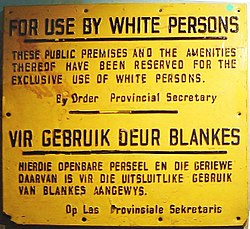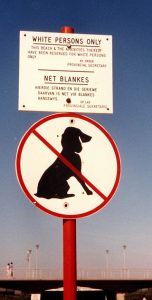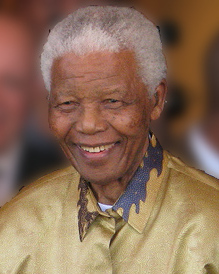Alan Zinober gave us a most interesting talk mainly on apartheid in South Africa but touched on examples of racial segregation throughout the world. Alan was born in South Africa but emigrated to England in the early 70’s so experienced the apartheid regime first hand and was well qualified to give us his thoughts.
Apartheid was a political and social system in South Africa during the era of white minority rule under pinned by legislation introduced by the National Party in 1948. It enforced discrimination against non-whites mainly focussing on colour and facial features. The word apartheid means ‘separateness’ in the Afrikaans language. South Africa was not alone in having segregation. The USA has a long history of segregation with the Ku Klux Klan ( KKK) inflicting many thousands of lynchings and beatings on black citizens. The Civil Rights Act – 1964 was passed to see the end of racial segregation, although sadly it is still common in the USA. Today segregation is still common throughout the world in one form or another whether it be through slavery, the caste system, religion, racial prejudice or simply the master/servant relationship.#
The National Party took over in 1948 and immediately passed a whole host of ‘ Apartheid Segregation Acts’ which were aimed at forcing different races to live separately from each other. The system was used to deny many basic rights to non-white people., mainly black in South Africa. People were defined by colour – white, black, coloured and Indian , being Chinese caused confusion it appears ! Your colour defined where you lived , where you worked, whether you needed a pass to access certain areas, whether you could vote, where you sat on the bus, which beaches you could visit, whether you could vote. etc, etc.
Interracial marriage was banned. Often it was difficult to decide who was black, white, coloured and all shades in between which resulted in at least one hardly scientific test being used called the ‘pencil test ‘ where a pencil is run through Afro textured hair to decide on the ethnicity . The Acts and their enforcement were extremely complicated and often ludicrous causing misery and hardship. People rebelled with protests in Sharpeville (1960) and Soweto ( 1976) but were aggressively put down. There was growing international criticism of the regime and countries boycotted South Africa in terms of trade, sporting and music events in order to isolate South Africa and bring apartheid to an end.
In 1989, F.W.de Klerk became President of South Africa and set out to reform the system.
Nelson Mandela
Nelson Mandela was released from prison and the ban on the African National Congress (ANC) was lifted. The first multiracial election was held on 27th April 1994 when all races could vote. ANC was victorious and Nelson Mandela was elected President of South Africa. This date is considered the end of apartheid. Today, black citizens are in positions of power, in the professions and have wealth but there is still a large majority of them who live in poverty. Apartheid lasted for over 40 years and it will take further decades for the society to change and have a better distribution of wealth.



